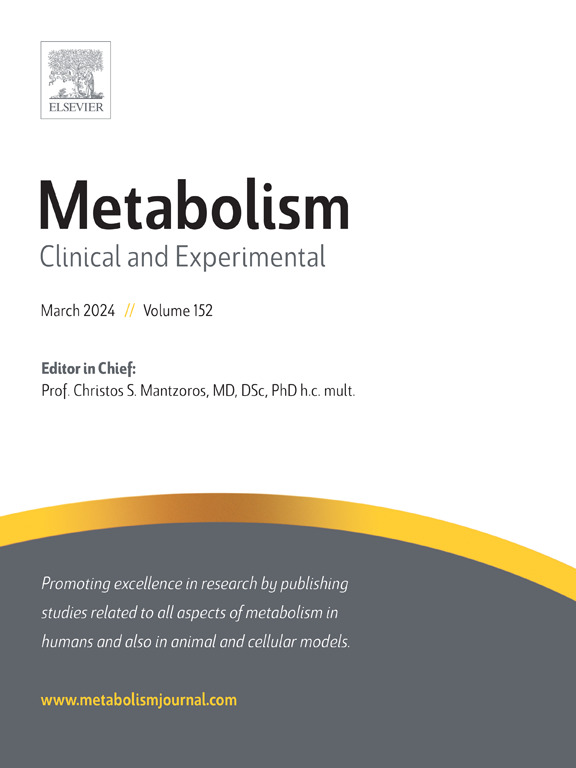细胞外 HMGB1 对衰老表型的传播取决于其氧化还原状态。
IF 11.9
1区 医学
Q1 ENDOCRINOLOGY & METABOLISM
引用次数: 0
摘要
背景与目的:细胞衰老通过血液循环系统传播,但其机制尚不清楚。高迁移率组框1 (HMGB1)是一种多功能衰老相关分泌表型(SASP)因子,存在于多种氧化还原状态。在这里,我们研究了氧化还原敏感的HMGB1 (ReHMGB1)在驱动旁分泌和全身衰老中的作用。方法:采用旁分泌衰老培养模型评价ReHMGB1对细胞衰老的影响。在细胞外处理HMGB1的每种氧化还原状态,以评估体外和体内的系统性衰老。采用SA-β-gal和EdU染色、p16INK4a和p21表达、RT-qPCR和Western blot方法检测衰老情况。进行大量RNA测序以研究rehmgb1驱动的转录变化及其潜在途径。细胞因子阵列表征了rehmgb1处理细胞的SASP谱。在体内,幼鼠全身注射ReHMGB1诱导多组织衰老。采用中年小鼠肌肉损伤模型评价HMGB1阻断剂的治疗效果。结果:细胞外ReHMGB1,而不是其氧化形式,在多种细胞类型和组织中强烈诱导类似衰老的表型。转录组学分析显示rage介导的JAK/STAT和NF-κB通路激活,驱动SASP表达和细胞周期阻滞。细胞因子分析证实了ReHMGB1诱导的旁分泌衰老特征。给药ReHMGB1提高了体内衰老标志物,而抑制HMGB1可减少衰老,减轻全身炎症,增强肌肉再生。结论:ReHMGB1是一种氧化还原依赖性的促衰老因子。靶向细胞外HMGB1可能为预防衰老相关病理提供治疗潜力。本文章由计算机程序翻译,如有差异,请以英文原文为准。

Propagation of senescent phenotypes by extracellular HMGB1 is dependent on its redox state
Background & purpose
Cellular senescence spreads systemically through blood circulation, but its mechanisms remain unclear. High mobility group box 1 (HMGB1), a multifunctional senescence-associated secretory phenotype (SASP) factor, exists in various redox states. Here, we investigate the role of redox-sensitive HMGB1 (ReHMGB1) in driving paracrine and systemic senescence.
Methods
We applied the paracrine senescence cultured model to evaluate the effect of ReHMGB1 on cellular senescence. Each redox state of HMGB1 was treated extracellularly to assess systemic senescence both in vitro and in vivo. Senescence was determined by SA-β-gal & EdU staining, p16INK4a and p21 expression, RT-qPCR, and Western blot methods. Bulk RNA sequencing was performed to investigate ReHMGB1-driven transcriptional changes and underlying pathways. Cytokine arrays characterized SASP profiles from ReHMGB1-treated cells. In vivo, young mice were administered ReHMGB1 systemically to induce senescence across multiple tissues. A muscle injury model in middle-aged mice was used to assess the therapeutic efficacy of HMGB1 blockade.
Results
Extracellular ReHMGB1, but not its oxidized form, robustly induced senescence-like phenotypes across multiple cell types and tissues. Transcriptomic analysis revealed activation of RAGE-mediated JAK/STAT and NF-κB pathways, driving SASP expression and cell cycle arrest. Cytokine profiling confirmed paracrine senescence features induced by ReHMGB1. ReHMGB1 administration elevated senescence markers in vivo, while HMGB1 inhibition reduced senescence, attenuated systemic inflammation, and enhanced muscle regeneration.
Conclusion
ReHMGB1 is a redox-dependent pro-geronic factor driving systemic senescence. Targeting extracellular HMGB1 may offer therapeutic potential for preventing aging-related pathologies.
求助全文
通过发布文献求助,成功后即可免费获取论文全文。
去求助
来源期刊

Metabolism: clinical and experimental
医学-内分泌学与代谢
CiteScore
18.90
自引率
3.10%
发文量
310
审稿时长
16 days
期刊介绍:
Metabolism upholds research excellence by disseminating high-quality original research, reviews, editorials, and commentaries covering all facets of human metabolism.
Consideration for publication in Metabolism extends to studies in humans, animal, and cellular models, with a particular emphasis on work demonstrating strong translational potential.
The journal addresses a range of topics, including:
- Energy Expenditure and Obesity
- Metabolic Syndrome, Prediabetes, and Diabetes
- Nutrition, Exercise, and the Environment
- Genetics and Genomics, Proteomics, and Metabolomics
- Carbohydrate, Lipid, and Protein Metabolism
- Endocrinology and Hypertension
- Mineral and Bone Metabolism
- Cardiovascular Diseases and Malignancies
- Inflammation in metabolism and immunometabolism
 求助内容:
求助内容: 应助结果提醒方式:
应助结果提醒方式:


